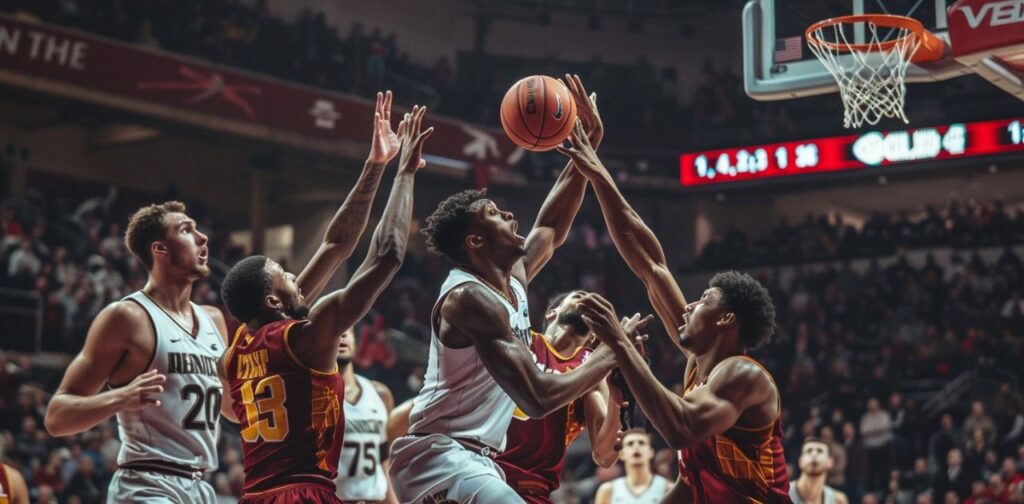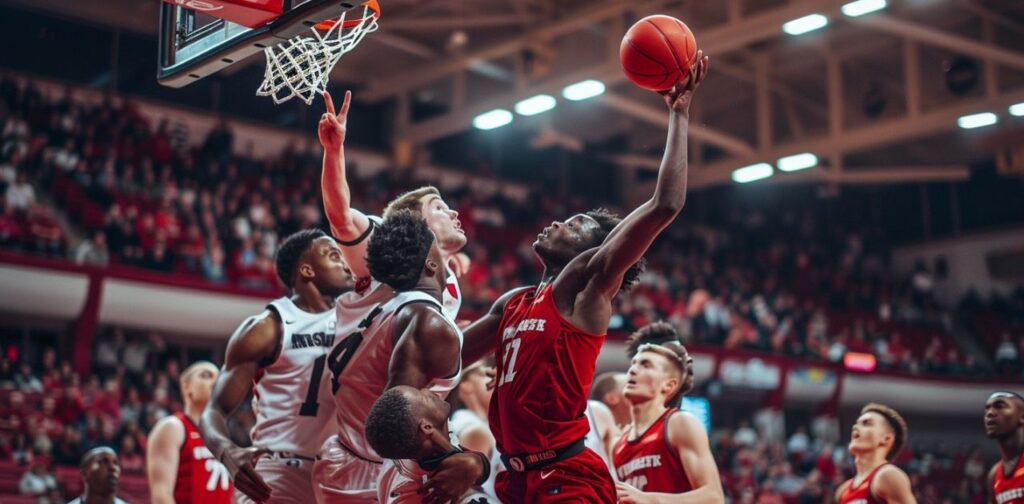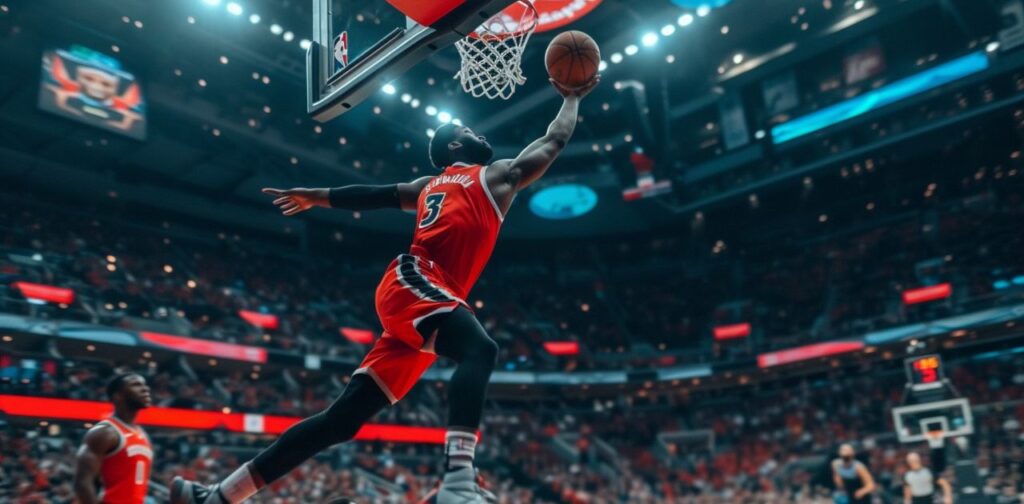Basketball is a popular sport in which millions of people play all over the world. Like other sports, basketball has its own terminology. This game requires a fast tempo, skill, agility, and stamina. Apart from the enthusiasts, it looks simple, but basketball has some unique rules and terms that make it more exciting and fun for fans.
One of the terms you encounter when playing or watching basketball is “TOL.” Many people aren’t aware of “What does TOL mean in basketball?” Let’s dive into the article to understand the answer to this question.
What does TOL stand for in Basketball?
“What does TOL mean in basketball?” The word TOL means “Time Out Left”. The time allowed for a team to take during a timeout. It is a term used to describe the number of times each team has a time-out during a basketball game. Timeouts allow teams to pause the game strategically. Coaches can discuss tactics, make substitutions, or catch their breath during intense moments.
In most basketball games, each team receives six timeouts—no more than three in each half. That’s three timeouts for the first half and three more for the second half. A timeout lasts for 60 seconds. During this time, the clock stops, and players gather around the coach.

What is Time Out Left in Basketball?
What does TOL mean in basketball? In basketball, the Time Out Left is usually the number of timeouts left on the team. “TOL” is usually displayed on the scoreboard, indicating how many timeouts the team has available during the game. A “TOL” will be displayed to let fans and coaches know that the strategic means can be used during the game.
Of these seven timeouts, the team is not allowed to take more than four timeouts during the fourth period, the last three minutes of the fourth quarter, and two or more timeouts during the entire extended war.
TOL is the ultimate tool for coaches to coordinate and manage team performance and determine tactical adjustments during the game.
Why Are Timeouts So Crucial?
In the fast-paced world of basketball, every second matters. Whether you’re a player, coach, or an enthusiastic fan, you’ve probably witnessed the tension during those critical moments when a timeout is called. But why are timeouts so crucial? Let’s explore this game-changing aspect.
1. The Anatomy of a Timeout
A timeout is a brief pause in the game when teams regroup, strategize, and catch their breath. Coaches use timeouts strategically to manage the clock, adjust tactics, and motivate players. Each team typically has six timeouts in a regulation NBA game—three for each half. A timeout lasts for 60 seconds, during which the clock stops.
2. Managing the Game Clock
When the game is tight, timeouts allow coaches to control the clock. They can slow down the pace or speed it up as needed. Picture a tie game with seconds left. A well-timed timeout can set up a winning play or disrupt the opponent’s rhythm.
3. Catching a Breath and Refocusing
Basketball is physically demanding. Timeouts provide players with a breather, especially during intense matchups. A timeout allows players to refocus, shake off mistakes, and regain composure.
4. Tactical Adjustments
Coaches use timeouts to tweak offensive and defensive strategies. They analyze opponents’ moves and adapt accordingly. Fatigued players can be swapped out during timeouts, ensuring fresh legs on the court.
5. The Psychological Impact
A well-executed timeout can shift momentum. It disrupts the opponent’s flow and rallies the team. The crowd roars during timeouts, energizing players and creating a charged atmosphere.
6. The Art of Ice-Cold Free Throws
Imagine a player at the free-throw line during a timeout. The pressure is immense. A timeout provides a mental reset. Coaches remind players to block out distractions and focus on those crucial shots.
7. In-Game Adjustments
Coaches analyze opponents’ strategies and make real-time adjustments during timeouts. Sometimes, a timeout reveals a surprise play—a hidden card up the team’s sleeve.
8. The Countdown: TOL (Time Outs Left)
Teams track their remaining timeouts. Running out of timeouts can be costly. Coaches may intentionally use timeouts to disrupt opponents or preserve clock time.
The Countdown: Keeping Track of TOL
Teams must keep a mental tally of their remaining timeouts. Imagine a nail-biting final quarter. If a team runs out of timeouts, they’ll have to rely on other tactics (like fouling) to stop the clock. Coaches strategically decide when to use timeouts—whether to break an opponent’s momentum or set up a crucial play.
TOL in Different Leagues: Understanding Time-Outs Across Basketball Worlds
What does TOL mean in basketball? In the electrifying realm of basketball, where every dribble counts and every shot reverberates through the arena, the concept of TOL emerges as a strategic lifeline. Let’s explore how this acronym plays out in various leagues, from the NBA to high school courts.

1. TOL in Basketball: A Quick Primer
The three-letter magic that determines a team’s tactical flexibility during a game. Coaches wield timeouts like chess masters—pausing the clock, recalibrating strategies, and rallying their troops. Each league sets its timeout quota. Whether it’s the NBA, NCAA, or FIBA, teams must manage their precious timeouts wisely.
2. NBA
In the NBA, each team enjoys seven timeouts during regulation play. Special rules kick in during the fourth quarter. Teams get fewer timeouts, and the final three minutes become a high-stakes battle. In overtime, each team clings to two timeouts—strategic lifelines in sudden-death scenarios.
3. NCAA
NCAA games adapt based on TV coverage. Media timeouts punctuate the action, granting each team four timeouts per half. Plus, there’s a sweet 60-second timeout for each team. A chance to huddle, hydrate, and recalibrate.
4. WNBA
WNBA teams revel in eight timeouts. Luxury compared to other leagues. But wait! In the fourth quarter, only three timeouts are allowed. Crunch time gets crunchier.
5. High School
Here, it’s a simpler affair—five timeouts. Coaches decide when to halt the clock. Three 60-second timeouts and two 30-second ones—strategic choices galore.
6. FIBA
FIBA (International Basketball Federation) keeps it concise—two timeouts per half. In overtime, a bonus timeout enters the scene. A chance to catch a breath and plot the next move.
Conclusion: What does TOL mean in Basketball
In conclusion, what does TOL mean in basketball? Imagine TOL as a magical pause button. When a team has TOL left, they can freeze time during a game. Coaches use these timeouts to strategize, catch their breath, or swap players. But here’s the catch: each team gets six timeouts—three in each half. Once they’re gone, it’s like running out of extra lives in a video game. So next time you watch a game, keep an eye on those TOLs. They’re the secret sauce that can turn the tide.


2 Comments
Hello i think that i saw you visited my weblog so i came to Return the favore Im trying to find things to improve my web siteI suppose its ok to use some of your ideas
OK text me on my email
taqiraza154@gmail.com